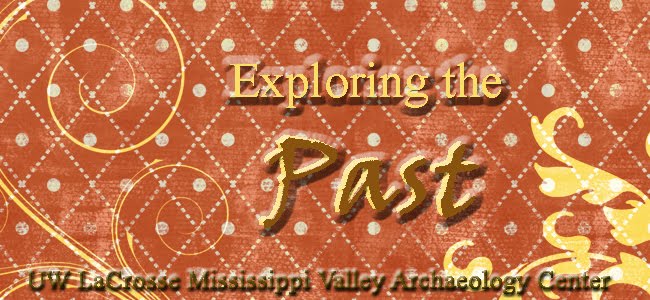Tuesday, July 20, 2010
How do we go from artifacts to understanding?
We went to the University's archaeology department's lab, got into our unit group from Friday's dig, and washed with a toothbrush the surface rocks, the level 1 cherts or flints, shards, and charred or preserved seeds. Sheila, who graduated in June and is working this summer, helped us to understand what we found. We were given a MVAC Artifact Catalog form and Lithic (stone) Terminology worksheet to help us categorize our findings. Professor Theler demonstrated how to prepare a platform by taking tiny flakes off and rounding it and then pound it once, but very hard, to get a chip to make a knife, arrowhead, or scraping tool. What many of us think of as arrowheads are really knives or knife points. Arrowheads are actually very small and fragile and fit on the shaft. Experts in flakes can tell at which stage the tools are. Looking at the various stages helps explain if this was a hunting or habitation (living) site. If the flakes are small, this might possibly be a hunting site where the Indians make repairs or retooled their weapons. The site find will all tell scientists what they were doing in the area and where they were getting raw material. Valuable sites gave the Native Americans material to trade. The shafts were extremely hard to make because you needed hard straight wood. They would make sure they retrieved them after they were thrown. The males made the hunting tools and of course hunted, while the women made the pottery and scraped the animal hides in addition to cooking. Professor Stevenson discussed the very specialized discipline of analyzing residue. She also reminded us that archaeologists always start with a specific research question before they choose a site or analyze artifacts. How do you tell if a tool maker is left or right handed?
Subscribe to:
Post Comments (Atom)


Judy,
ReplyDeleteYou are learning so much. It appears that you spend classroom time or reading time or both before you go out on your expeditions. I loved the picture you posted. You absolutely sparkle with enthusiasm.
Does your blog substitute for a journal that you are required to submit ( or not )at the end of your adventure? It's so perfect, if anybody asks you any questions about your three weeks you can direct them to your blog and you won't have to repeat yourself twenty times. Right?
I gave Paul your Blog Link and he has been following your activities and he is very impressed with your writing skills.
I'll check in again and keep up the good work.
Love, Jude
We're alternating between spending time in the classroom and field trips. We were given 4 excellent books and articles to read. In class Professors Theler and Stevenson share their wealth of knowledge. I'm doing the Blog for my students to follow who are interested in archaeology.
ReplyDelete